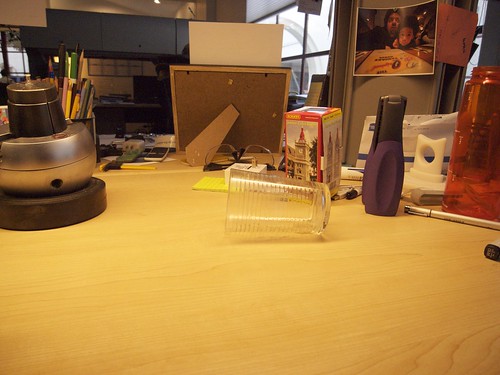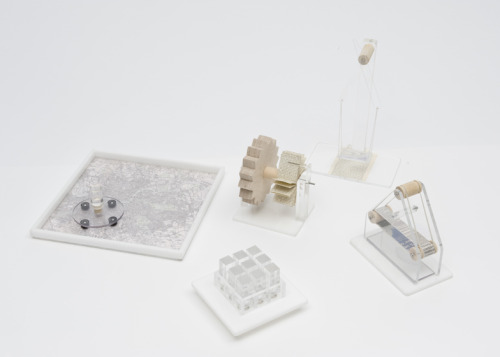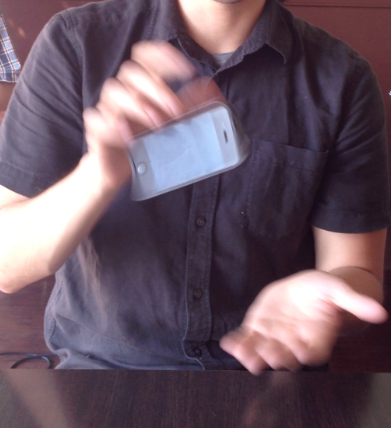
Photographic recollection of an accident that happened a few minutes before I cleaned it up. In the studio, morning — reaching to my left, I knocked over my coffee which did a fairly good job of soaking a couple of things. No biggie, except that what surprised me most was the failure of my peripheral vision and proprioception, which are both usually reasonably well-tuned. It all led to a discussion about how both of this bio capabilities may be losing their resolution with all the cone-of-activity work that ends up happening amongst people like me who tend to focus their attention into small cones of activity — at screens, both big and small, but mostly fairly small, from the cell phone display up to 24 inch LCD monitors. Andrew says we should tune to see our toes whilst looking straight ahead. Watching a West Wing rerun from season one, a Secret Service agent laments not being able to recall a crucial detail seen out of her periphery after President Bartlett and his entourage are shot at. In a recent episode of The Unit, an operator torments himself nearly to death after coming to the shock-induced, near-death realization that he missed the tell-tale miniscule details of a sniper stealthily getting into position at a high window.
Why do I blog this? Observations about how we observe and intriguing possible roles that our habits play in altering capabilities. Good, bad — not really interested. Just wondering, where do our observational abilities shift toward? Do we become like the bottom, steam-vent dwelling creatures that go around blind, sensing with touch, gesture interfaces finely tuned through millennia of playing with iPhones and game controllers?
Continue reading Tipped.


